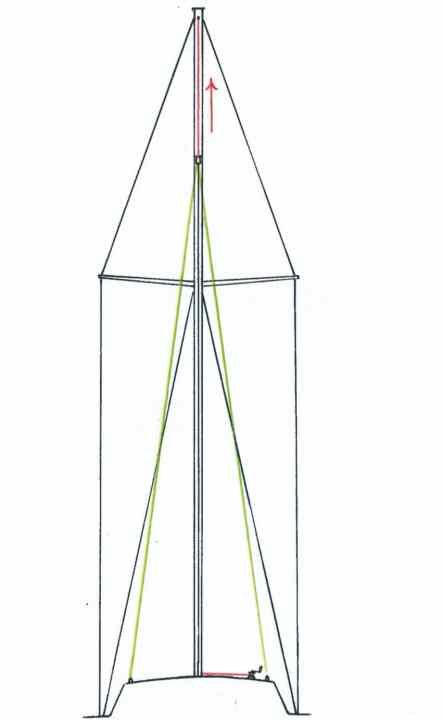
Rig lifehack 1: Auxiliary shrouds when setting the mast

If the mast can be set itself thanks to the folding foot, it is important to keep it straight during the manoeuvre. We use a double-laid line for this. This is attached to a solid mast slide and pulled up over the spreader with the main halyard. The ends of the line are attached to the shrouds of the main shrouds. During the setting or laying process, the main halyard is now held taut by a second person. Under no circumstances should the halyard be covered! This ensures that the auxiliary shrouds hold the mast effectively and securely in the centre line.
Horst Wilk, Emden
Rig lifehack 2: Vacuum packaging helps prevent corrosion of the shroud cutter

Only stainless materials should be used for metal parts on board. Unfortunately, this principle cannot be applied to tools. Equipment that is only used in an emergency or very rarely is particularly vulnerable. They often end up in the depths of the locker.
In the case of our yacht, this concerned the shroud cutter, which we found as a rusty lump under various items of equipment after buying our second-hand boat. Apart from the fact that this is the wrong place to store the emergency tool, a rusty and seized shroud cutter is completely unusable, also because the cutting edges are then no longer sharp. To prevent corrosion in the future, we sprayed the new tool with oil and had it vacuum-sealed and sealed in a plastic bag. In an emergency, despite the aggressive sea air, an oiled and rust-free shroud cutter should be at hand even years later.
Florian Dullinger, Pflach (Austria)
Rig lifehack 3: Caps with guide

If the mast breaks, the stays must be cut off quickly, as the rig hanging outboard can damage the hull. Wire cutters from the construction sector will not cut anything over ten millimetres. The cheap alternative is a good hacksaw. To hold the wire in place when sawing, we milled a groove in a piece of multiplex to match the shroud thickness, into which the wire is inserted. Transverse grooves guide the saw blade. Non-slip coating on the underside ensures a better grip on deck.
Günter Löffler, Uetersen
Rig lifehack 4: Open the shroud tensioner easily with a cordless screwdriver

Cleaning and care are required before setting the mast. Dirt collects quickly, especially in the threads of the shroud tensioners; this causes the thread to suffer when turning under load. The only solution is to unscrew, clean, grease and screw back together. A tedious task with eight tensioners. To make the work quicker, we have bent a hook out of wire, which can be used to unscrew the shroud tensioners with a cordless screwdriver; an Allen key will also do.
Meinert Matzek, Hamburg
Do you have any advice for other sailors?
We will honour the publication of your lifehack with 50 EURO. Please add photos or sketches. We also need your address and bank details.
Submissions to: Editorial office YACHT, Quartier O, Paul-Dessau-Straße 8, 22761 Hamburg; or: mail@yacht.de
